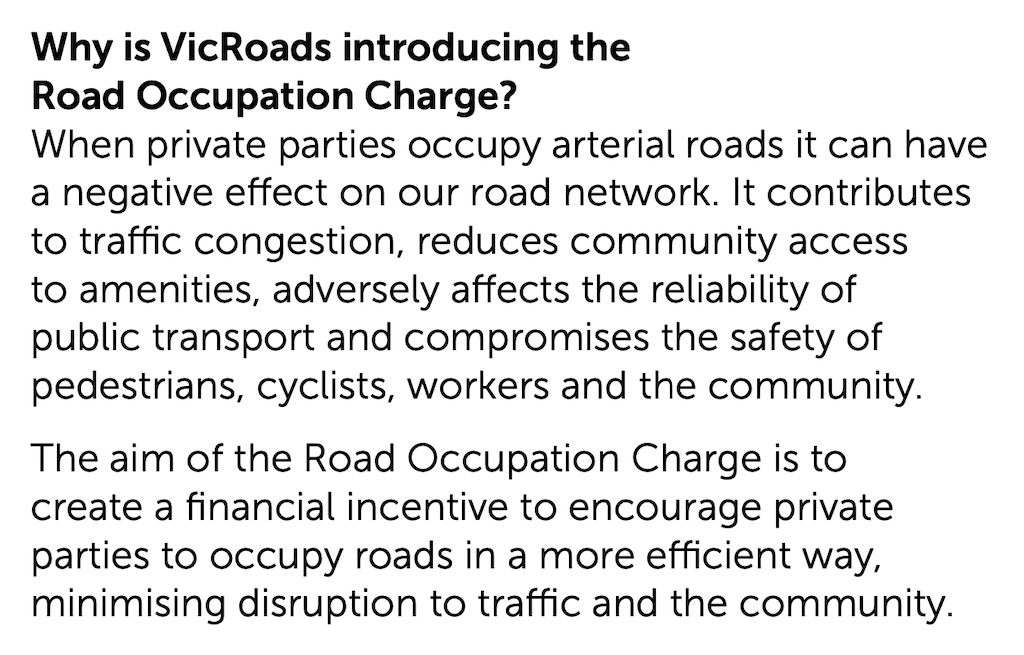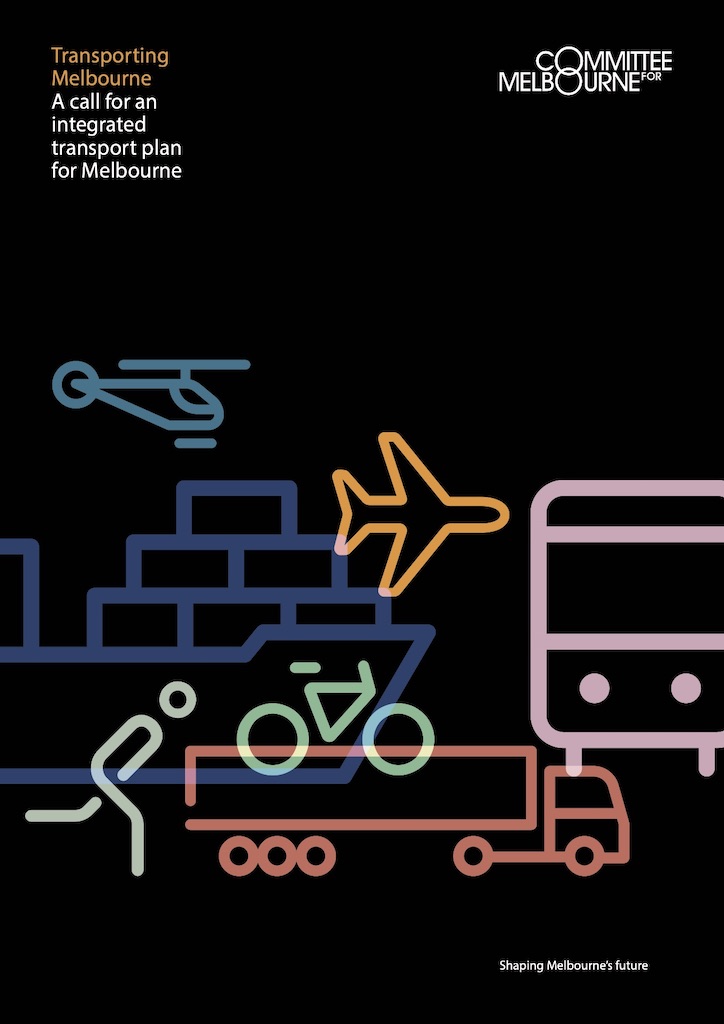Also called decongestion charges
We all want to get where we’re going, without being unreasonably slowed down by other people. It’s a matter of social justice that people who really need to drive, are able to travel reliably, without experiencing severe congestion and delay. The problem is that at peak times, when roads are congested, each vehicle on the road is slowing down others. We can solve this by using demand responsive driving charges, which are the smallest possible charge for that time of day, that keeps traffic volumes low enough so it can flow smoothly. The charge increases at peak times, which encourages some people to drive during off-peak times, thus reducing congestion.
Benefits
The benefits of demand responsive driving charges are described in:
- Infrastructure Victoria, The Road Ahead – How an efficient, fair and sustainable pricing regime can help tackle congestion
- Henry Review of Taxation, Recommendation 61
- The Conversation: The case for congestion charging in Australia; Road user charging for congestion management; and Delay in changing direction on how we tax drivers will cost us all
Or view this introduction:
Support from the Committee for Melbourne
In their report Transporting Melbourne, the Committee for Melbourne recommends road user charges:
The formulation of a new pricing regime will be critical to the challenge of reducing congestion, improving efficiency of the state’s transport network and achieving optimum value-for- money for infrastructure investment. Significant productivity losses and other inefficiencies are expected unless we begin to price our roads adequately.
Transporting Melbourne, from the Committee for Melbourne
Support from the Grattan Institute
The Grattan Institute recommends imposing congestion charges:
We recommend a three-stage reform: within the next five years, state governments should introduce cordon charging, where drivers pay to cross a boundary into the capital city CBDs in the morning peak and out in the afternoon peak; within the following five years, people should pay to drive along the busiest urban freeways and arterial roads at peak periods; and eventually people should be charged on a per-kilometre basis for driving across the city’s entire road network at the busiest times.
Grattan Institute
Support from the Victorian Government
The Victorian State Government will introduce a Road Occupation Charge for arterial roads across inner Melbourne. At the moment the introduction is deferred owing to COVID-19. The justification for the charge explicitly describes how private parties occupying a road contributes to congestion. At the moment the charge does not apply to vehicles occupying a lane by driving on the lane (and thus delaying other drivers), but in principle could be extended to apply, thus creating a driving charge.

The Road Occupation Charge was trialled in the City of Yarra in 2018, showing that road user charging is effective at changing behaviour:

It’s ethical to charge to drive on congested streets
It’s ethical for the Victorian State Government to charge to drive on congested streets; and use the revenue to invest in walking, cycling, public transport and car sharing; because it would deliver more mobility for more people. It represents a transfer of wealth and mobility from people on high incomes (who dominate the cohort of people who drive) to people on lower incomes (who dominate the cohort of people who use walking, cycling, public transport and car sharing). For more detail refer to our page on ethics.
Revenue can help provide options
Revenue from demand responsive driving charges is a by-product, as the target is free-flowing traffic. However, revenue can be used to provide people with options to driving, such as safe travel infrastructure for walking, cycling and public transport, including protected intersections and protected public transport stops. As people voluntarily change to other modes, this reduces traffic congestion and works to reduce the demand responsive driving charge.
Conclusion
All Yarra road users, including drivers, will be better off overall if we introduce demand responsive driving charges and use the revenue to invest in infrastructure for walking, cycling, public transport and place making.
How you can help
You can help by appearing on the Streets Alive Yarra website as a champion for your local street, neighbourhood, or school.

